Subaru Impreza WRX and STI: A Guide To Every Generation
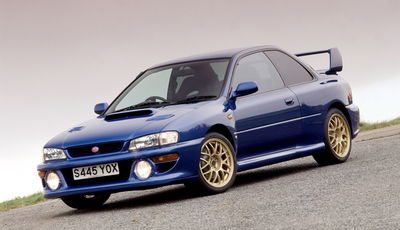
The magical world of rallying has turned so many humdrum family cars into generation-defining performance heroes. On their own, the names Delta, Escort and Lancer offer little to get enthusiasts excited, but tag Integrale, Cosworth and Evolution onto them, and you get the sort of late 20th century legend that gets a certain type of person bidding their life savings away on online auctions.
Then there was the Subaru Impreza, another small, run of the mill family saloon. Unless, of course, you stick three extra letters on its name: WRX. Another three still elevate it even further: STI.
This is the story of a car that turned boring into brilliant, getting involved headfirst in one of the greatest, longest-lived automotive rivalries there ever was in the process, and making the rumble of a turbocharged flat-four a sound that catches the attention of an entire generation of enthusiasts to this day.
Origins

It can be easy to forget that not every version of the Subaru Impreza is a turbocharged monster. Introduced in 1992, the Impreza in its most basic form is simply Subaru’s small family car, a replacement for the Leone that served the same purpose in the ’70s and ’80s.
In fact, the standard Impreza still fulfils this role today, albeit not in Europe, where Subaru’s lineup is now exclusively made up of crossovers.
It was only when Subaru saw the Impreza’s potential as a replacement for the bigger, heavier Legacy as its rally car of choice that the versions we’re interested in came into play. The Impreza already came with two Subaru hallmarks – a low centre of gravity boxer engine and optional symmetrical all-wheel drive – which were a good start.

To make it more suited for the rally stage, though, Subaru overhauled the suspension, turbocharged the engine, and fitted some outrageous aero parts to the original Impreza’s jelly mould bodywork. To denote that this was the version designed to go rallying with, WRX – World Rally Experimental – was added to its name.
First generation (GC8)
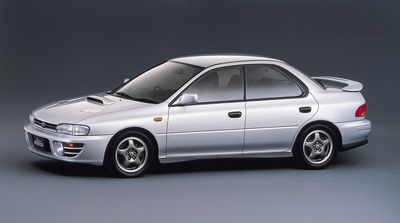
The original Impreza WRX arrived hot on the heels of the standard model, in late 1992. It’s commonly referred to by its chassis code, GC8 – ‘GC’ referring to the Impreza saloon, and ‘8’ to the 2.0-litre turbocharged four-cylinder boxer engine. That engine initially made 237bhp, and was paired with all-wheel drive, central and rear differentials and a five-speed manual gearbox.
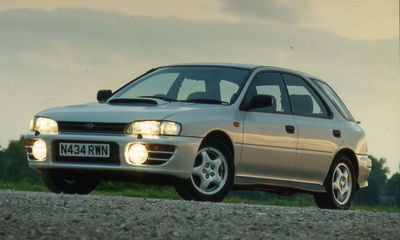
To begin with, the full-fat WRX was limited to the Japanese market. Europe got it as the Impreza GT in left-hand drive markets and the Impreza Turbo 2000 in the UK, but it was detuned to 208bhp. That nevertheless put its performance right up there with rivals like the Lancia Delta Integrale and Ford Escort Cosworth, and it was cheaper than either, making the Impreza Turbo an instant cult hit on our shores. Much bigger things were to come, though.
As with many Japanese performance cars of this era, the original Impreza WRX saw regular updates and was available in a baffling number of different versions. To keep this article from turning into something that takes up an entire room full of servers, we’ll briefly run through each major update, then a few of the noteworthy special editions the car received over the years.
The first big additions came in 1993, when the WRX gained the options of an automatic gearbox and a compact estate version (the GF8) which, in the Japanese market, was down on power compared to the saloon at 217bhp.

A more significant change came in 1994, though, when an even harder, faster Impreza arrived for Japan only: the WRX STI. These three extra letters stood for Subaru Tecnica International, Subaru’s in-house motorsports and tuning division. Its power was upped to 247bhp, or 271bhp for the stripped-back Type RA version, which also introduced the adjustable Driver Controlled Centre Differential (DCCD).
Later in 1994, the Version II update arrived. The regular WRX’s power was increased to 256bhp, and the STI got a bump to 271bhp in 1995. For 1995 and 1996, Japan also got an oddly appealing jacked-up version of the Impreza WRX estate, complete with bull bars and spare wheel carrier, named the Gravel Express.

More power still was to come with the Version III in 1996. At this point, things get a bit murky, because now both the WRX and STI were making a quoted 276bhp – the maximum allowed under the Japanese ‘Gentleman’s Agreement’. It’s thought that both were producing more in reality.
The 1997 Version IV update saw the launch of a two-door Impreza WRX in Japan. Badged the WRX Type R, it was stiffer and 10kg lighter than the saloon, and was developed to give the car an even greater edge in rallying, where it had seen massive success since its launch.
The next few updates, Versions V and VI, brought more marginal mechanical and cosmetic tweaks, with power remaining at an ‘official’ 276bhp throughout. In Europe, meanwhile, the Turbo 2000 got a boost to 218bhp in 1999. Production of the first-gen Impreza wound up in 2000.
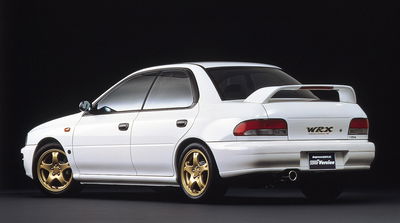
During its eight year lifespan, there were plenty of noteworthy special editions. Throughout its life, the Japanese-market WRX STI was available as a lighter, harder Type RA – ‘Record Attempt’ – designed to serve as a better standard base for rally car conversion.
Perhaps the most memorable Impreza of all time, though, arrived in 1998 – the 22B STI. Based on the two-door car, it was wider and lower, and had thoroughly overhauled suspension with rose joints, forged aluminium control arms and new Bilstein dampers and Eibach springs. The bigger new rear spoiler was adjustable, and the engine had been bored out to 2.2 litres, hence the name. While official power remained at 276bhp, torque was up by 8lb ft.

Just 400 22Bs were built for Japan, plus a tiny handful of 24 for other right-hand drive markets, namely the UK, Australia and Hong Kong. This small batch of UK cars were the only STI-badged versions of the original Impreza to ever come to Britain through official channels.
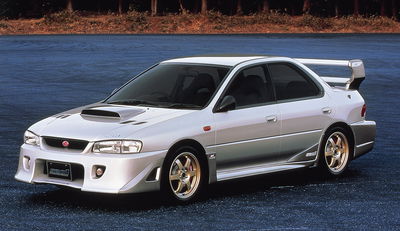
An arguably even more extreme special edition GC8 WRX STI arrived in 2000, right at the end of its life, in the unmistakable shape of the S201. It had toughened, height-adjustable suspension, a front LSD and a set of forged alloys. Perhaps the most significant changes, though, were the engine tweaks that lifted power to a quoted 296bhp, making it one of the only cars to flout the 276bhp Gentleman’s Agreement during the years it was in place. Oh yeah, and it had that bodykit. It was 2000, after all. 300 S201s were produced.
Although the Type RA, S201 and the majority of 22Bs were exclusive to the Japanese market, the UK, where the Impreza was just as much of a smash hit, had its own share of noteworthy special versions. Lots of these featured the involvement of Prodrive, the Oxfordshire-based outfit that also ran Subaru’s World Rally Team.
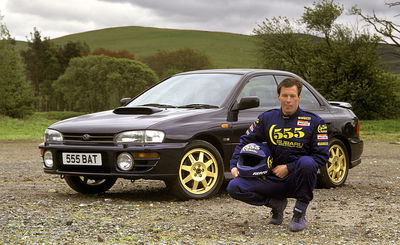
The Series McRae of 1995 and RB5 of 1999 were both UK editions celebrating British rally drivers who’d seen massive success with Subaru – Colin McRae and Richard Burns, respectively.
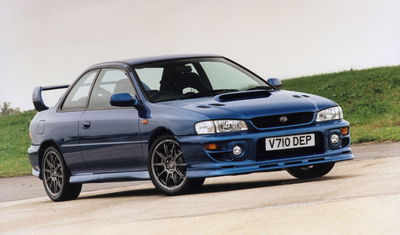
In 2000, though, Britain got its own extra-special special. Set up by Prodrive specifically to work well on British roads, the P1 was based on the stiffer two-door bodyshell – usually only available in Japan –, and got a new exhaust and catalytic converter to make a JDM-equalling 276bhp. The suspension, meanwhile, was reworked to cope with Britain’s lumpy, twisty roads. 1000 P1s were made, and nearly 25 years later, it would serve as the inspiration for Prodrive's spectacular P25 restomod.
Second generation (GD/GG)
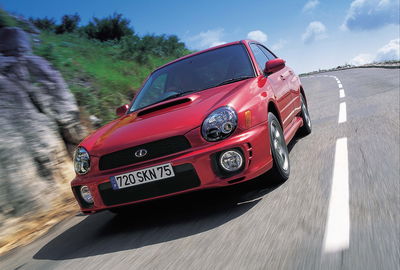
An all-new Impreza arrived in 2000, with the new WRX and STI following it at the end of that year. Once again it came as a saloon – the GD – and a small estate, the GG. This time round, the STI was available in markets outside of Japan, with North America getting both the WRX and STI for the first time.
This is also where all the different market-specific versions start to get really confusing, so bear with us.

Unusually for a single generation of a car, the second-gen Impreza received not one but two major facelifts throughout its life. The three distinct looks have earned not-always-flattering nicknames from the enthusiast community based on their looks.
The original version of the car, with its big, round headlights, is known as the ‘Bugeye’. That lasted until 2002, when the first facelift came in, styled by Peter Stevens, who’d previously designed the McLaren F1. Its wider, more distinctively shaped headlights have earned it the nickname ‘Blobeye’. 2005 brought the third and final iteration, with Subaru’s new corporate three-piece grille and pointier, more swept-back headlights. This one’s referred to as the ‘Hawkeye’.
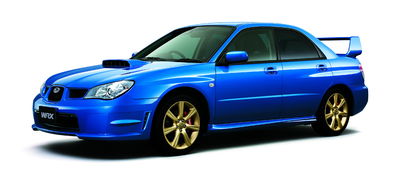
In Japan, the second-gen WRX got a newer version of the same 2.0-litre EJ20 turbocharged flat-four that had powered the original, making 247bhp. The STI, meanwhile, had the same engine, still producing a quoted 276bhp, and now got a six-speed manual in all markets.
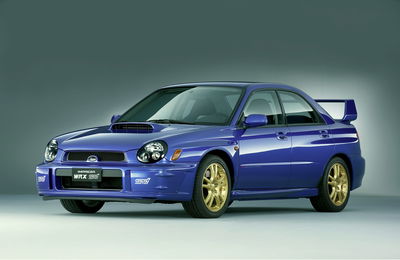
In Europe, the WRX made do with 215bhp, while the STI initially produced 261bhp, although just to complicate things, various Prodrive Performance Packs elevated this as high as 301bhp in some versions of the STI. Incidentally, UK cars were badged as 'Type UK', but this didn't really mean a great deal beyond denoting that they were for the British market.
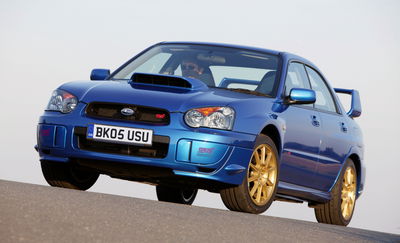
North America, where the WRX was making its market debut, initially got the car in 227bhp guise. When the STI eventually arrived there in 2004, it had a totally different engine to European and Japanese versions, a bigger 2.5-litre EJ25 making 300bhp. That engine, in a lower-powered 231bhp form, found its way into the lesser WRX with the Hawkeye facelift in 2006.
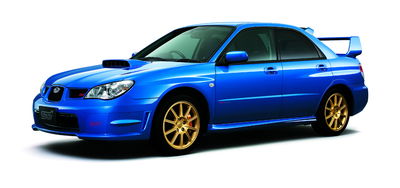
The Hawkeye also introduced the 2.5-litre engine to Europe, where it produced 226bhp in the WRX, 276bhp in the STI, and up to 316bhp in the Performance Pack-equipped STI. The JDM Hawkeye, though, kept the original 2.0-litre engine and its nominal 276bhp output. Still following? Us neither, to be honest.
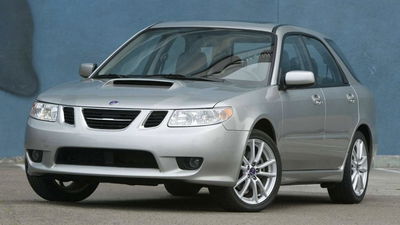
One particular curiosity in the Impreza WRX’s life turned up for North America in 2005. At this time, General Motors had a 20 per cent stake in Subaru’s parent company, Fuji Heavy Industries, and also wholly owned Saab. In short, to plug a gap in Saab’s North American lineup, GM took an Impreza estate, gave it a slightly nicer interior and some Saab-ish styling, and called it the 9-2X. Available as a lesser naturally aspirated version and a WRX-based, 227bhp Aero model, the ‘Saabaru’, as it was inevitably nicknamed, lasted a mere two years before being discontinued.
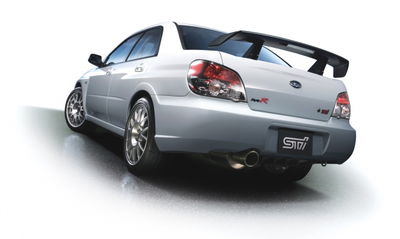
With the basic model updates dealt with, let’s take a look at some of the notable special versions. In the vein of the Type RA versions of the original, Japan got a stripped-out rally-ready model named the Spec C. There were even more hardcore versions of this, somewhat confusingly named the Spec Type RA, and in 2007, a more powerful 316bhp version called the Spec C Type RA-R.
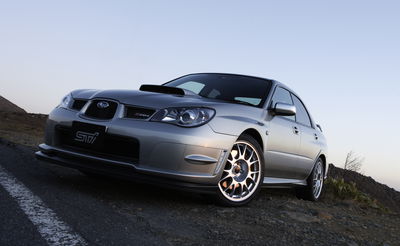
Each of the three distinct versions of the second-gen car also got their own more extreme S20x versions – the Bugeye S202, Blobeye S203 and Hawkeye S204. Each featured reworked suspension and aero and a bump to 316bhp.
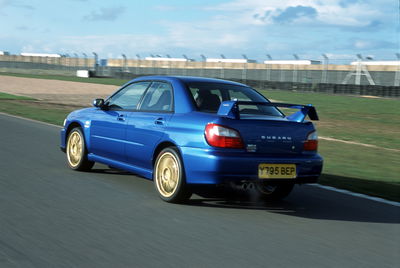
Japan may have seemed to have all the fun with special editions, but once again, we got a few noteworthy ones in the UK, too. Early on, there were 300 Bugeye WRX UK300s, largely a cosmetic upgrade but featuring the Prodrive Performance Upgrade to take power to 245bhp. The Blobeye WRX got a similar treatment with 2005’s WRX 300, with the Prodrive upgrade lifting power to 265bhp.
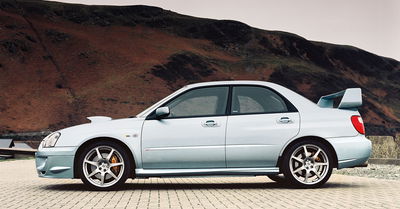
The first really special UK version of the second-gen Impreza, though, was 2004’s WRX STI WR1, which marked the company’s latest rallying hotshot, Petter Solberg, winning the previous year’s World Rally Championship. These got Subaru’s torque-shuffling controllable centre diff, Prodrive-developed springs that sat it 25mm lower than normal, lightweight forged wheels and P Zero tyres, and the top 316bhp version of the EJ20 engine. 500 came to the UK, all painted Ice Blue.

Then, in 2006, there was another UK limited edition wearing the initials of Richard Burns, who after the original RB5, had gone on to win the 2001 WRC with Subaru. Tragically, though, the RB320 wasn’t a celebration of his success, but in memory of the British driver, who had died of cancer in 2005. Based on the 2.5-litre Hawkeye STI, it had a bespoke Prodrive-fettled suspension setup, plus the Prodrive Performance Pack to lift power to 316bhp. 320 were produced, all in Obsidian Black.

One curious UK special edition arrived in 2006 – the STI Spec D. The ‘D’ stood for ‘discreet’, with the model eschewing the usual in-yer-face rear wing and blue-and-gold colour scheme for a muted Crystal Grey. A few extra interior luxuries were thrown in for good measure, too. 300 were made, all mechanically identical to the standard STI. Japan received a similar edition called the A-Line.
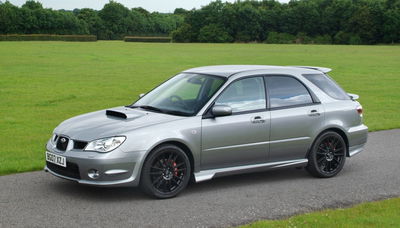
Rounding out the second generation car’s run in the UK was 2007’s WRX GB270. This was another Prodrive Pack car, with power up from 227 to 266bhp, and also gained a quick-shift gear linkage and lowered suspension. 400 were made, split between 300 saloons and 100 estates.
2007 also marked the end of the line for the second-gen Impreza, perhaps the most confusing model of all – no small feat with these cars.
Third generation (GE/GH/GR/GV)
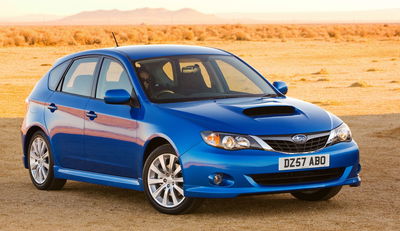
Big changes were afoot for the third-gen Impreza WRX, which arrived in 2007. Nothing earth-shattering – it still had a turbocharged four-cylinder boxer engine – but in Europe, at least, gone were the saloon and shrunken estate bodystyles, replaced by a single, more traditional five-door hatch body. Other regions could still get a (slightly awkwardly styled) saloon, though. Initially, the WRX versions shared their chassis codes – GE for the saloon, and GH for the hatch – with the non-performance Impreza range.
There was much more commonality between markets for the WRX this time round. No matter where you were, you got a 2.5-litre EJ25 engine producing 227bhp, and still hooked up to a five-speed manual. Gone was the mechanical LSD of older cars, the third gen swapping it out for the electronically-controlled Vehicle Dynamics Control (VDC) system that adjusted power, torque and braking force distribution on the fly.
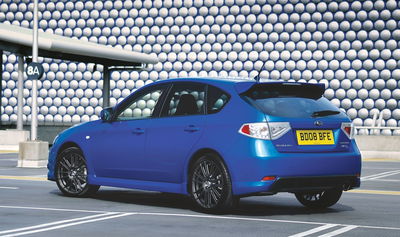
After the initial version of the WRX received a lukewarm response, an uprated version was launched in 2008, badged as the WRX-S in the UK. Once again fettled by Prodrive, power was upped to 251bhp thanks to a new turbocharger, while firmed up suspension was fitted and the visuals were given a bit more punch.
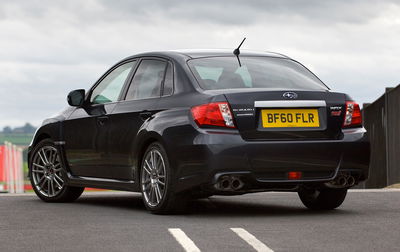
Later in 2007, the WRX STI made a return. Once again, Japan got a unique spec, keeping hold of the old 2.0-litre engine, which now made 304bhp. Export markets, meanwhile, got the bigger 2.5-litre motor, although it was slightly down on power at 296bhp. The STI came as both a hatch and saloon, which received their own chassis codes – GR for the hatch, GV for the saloon – to denote their wider bodies. The medium-spice WRXs would later adopt these bodies, too.
In 2010, the WRX STI saloon made its way to Europe. Now, though, it was simply badged as the Subaru WRX STI, with the Impreza name nowhere to be found.

Once again, higher-performance versions and special editions abounded. Plenty of these were confined to Japan, beginning with the return of the lightweight STI Spec C in 2009. Initially only available as a hatch, it was joined by a saloon in 2012.
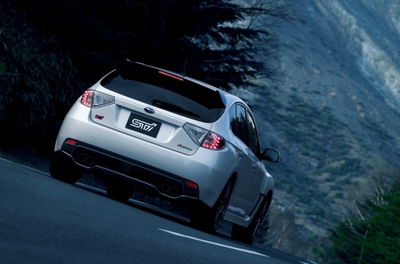
Then, in 2010 came the R205. Despite its name, it was part of the lineage kicked off by the S201 back in 2000. The ‘R’ stood for road, and it was here that this car was supposed to exceed, with beefier brakes, reworked springs and dampers, a stiffer chassis and a boost in power to 316bhp. 400 were made.
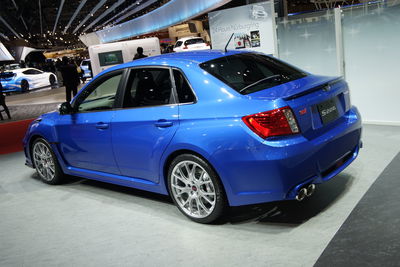
It was followed in 2011 by the similarly-equipped S206 saloon. 300 of these were built, 100 of which had the NBR Challenge Package. This extra set of tweaks, informed by Subaru’s experiences running in the fearsome Nürburgring 24 Hours, brought a carbon roof and adjustable carbon rear wing.

Over in the UK, meanwhile, we once again got a few special Imprezas of our own. The first arrived in 2009: the 330S. This, again, was something of a response to the middling reception the third-gen Impreza had received compared to its predecessors. It had the usual round of Prodrive suspension fettling, plus engine upgrades that took power to 325bhp, making it the most powerful factory Impreza yet.
That was about to be blown out of the water, though. Although they still had a working relationship, Subaru and Prodrive weren’t quite the bedfellows they’d once been following Subie’s withdrawal from the WRC after 2008. In 2010, it fell to another famous name from British motorsport – Cosworth – to produce perhaps the most extreme roadgoing Impreza ever.
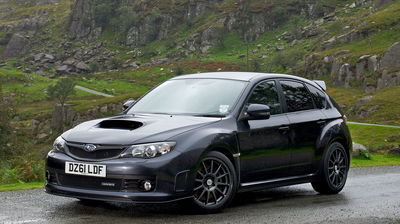
The CS400, as its name suggests, produced 400ps – 395bhp – thanks to new pistons, bearings and gaskets and a bigger turbo. It also got lightweight wheels, new Eibach springs and Bilstein dampers, and massive AP Racing brakes. Just 75 were produced, all for the UK market.
Never quite as beloved as the first two iterations, the third-generation Impreza WRX and STI stayed in production until 2014, even as the regular Impreza was replaced in 2011. Nevertheless, the WRX lives on to this day, although it’s not quite the same…
The future
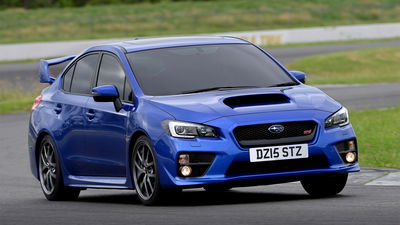
After the third-gen Impreza, the WRX and WRX STI were spun off into their own, separate models, although they were still related to the Impreza. The first of these standalone cars was the VA WRX, launched in 2014.
By now, Subaru and its old sparring partner, Mitsubishi, were long gone from the WRC, and the appetite for these old-school rally-bred saloons was waning in favour of the new generation of more refined mega-hatch like the VW Golf R and Mercedes A45 AMG.
The new WRX, though, nevertheless satisfied those still hankering for the late ’90s and early ’00s glory days, especially in 304bhp STI guise – the only version we could buy in Europe.
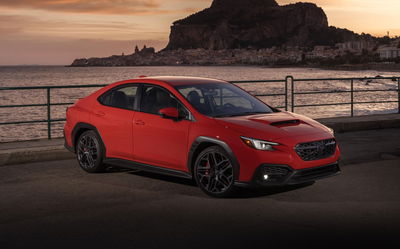
The VA generation went off sale in the UK in 2018, but stuck around until 2021 in Japan and North America, gaining hardcore S207, S208 and S209 during its life. It was replaced in 2021 by the VB WRX. A car like this is something of a novelty in itself in 2025, but it’s a long way from the Impreza’s prime.
For a start, it’s not available in Europe at all, thanks to our tighter emissions rules. Secondly, there’s no STI version – it only comes as a regular WRX, with 271bhp from its 2.4-litre turbo flat-four, and either a six-speed manual or a fun-sapping CVT.

Various concepts and limited editions have hinted at the return of a fully-fledged STI, and it finally happened – sort of – in early 2025. The S210 is a Japan-only limited edition, now with 300bhp – a healthy amount, but still a little way down on some earlier Imprezas. The suspension has been tweaked too, but bafflingly, it’s only available with a CVT gearbox. More to the point, only 500 are being made.
So will we ever see a proper return of the WRX STI? It’s not out of the question, but there are two caveats. Firstly, it still probably won’t wear Impreza badges. Secondly, it’ll likely be electrified in some form – either as a hybrid, or a full EV. We know from various supercars and things like the Hyundai Ioniq 5 N that hybrids and EVs can make for fully convincing performance cars, but it’s still a real shame to think we’ll probably never go back to those glory days when a blue Impreza STI with gold wheels was one of the ultimate objects of automotive desire.














Comments
No comments found.